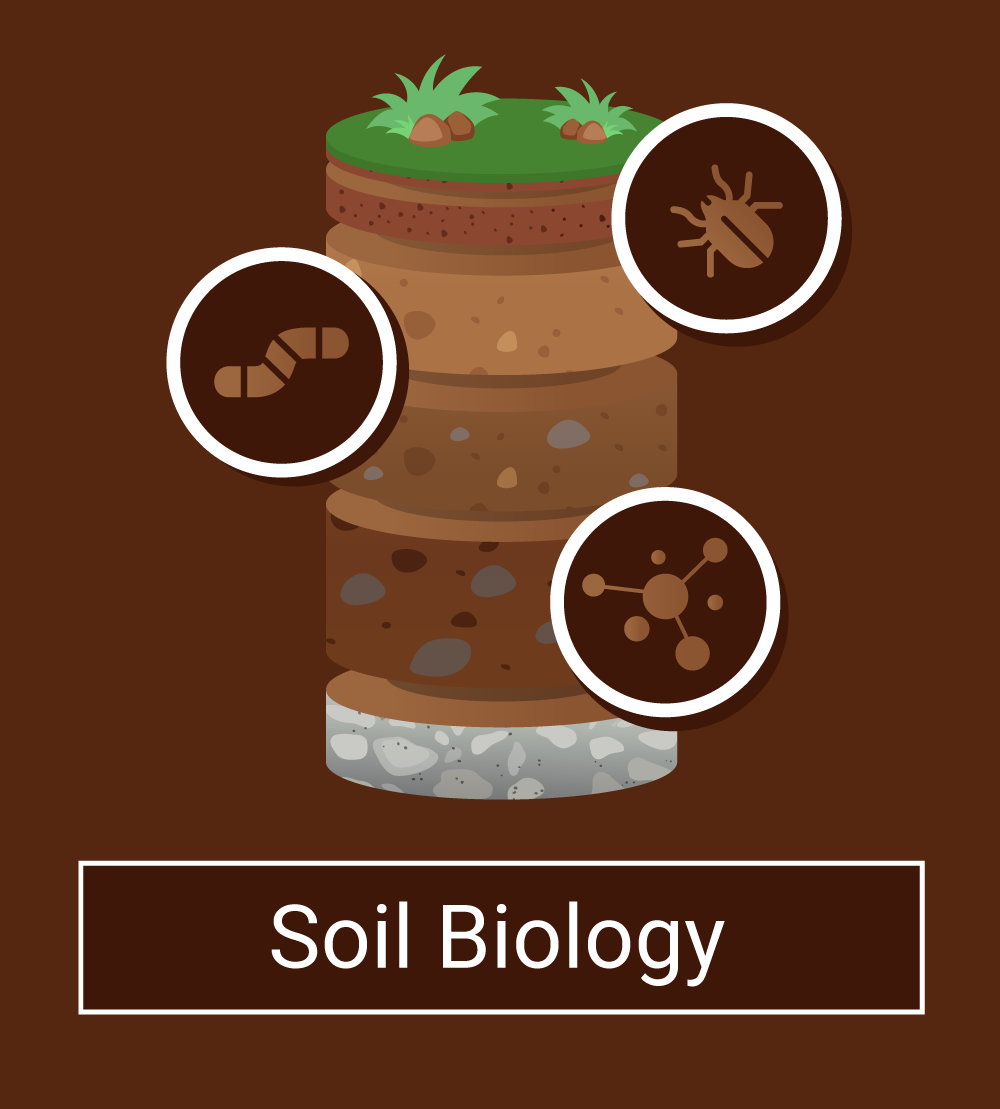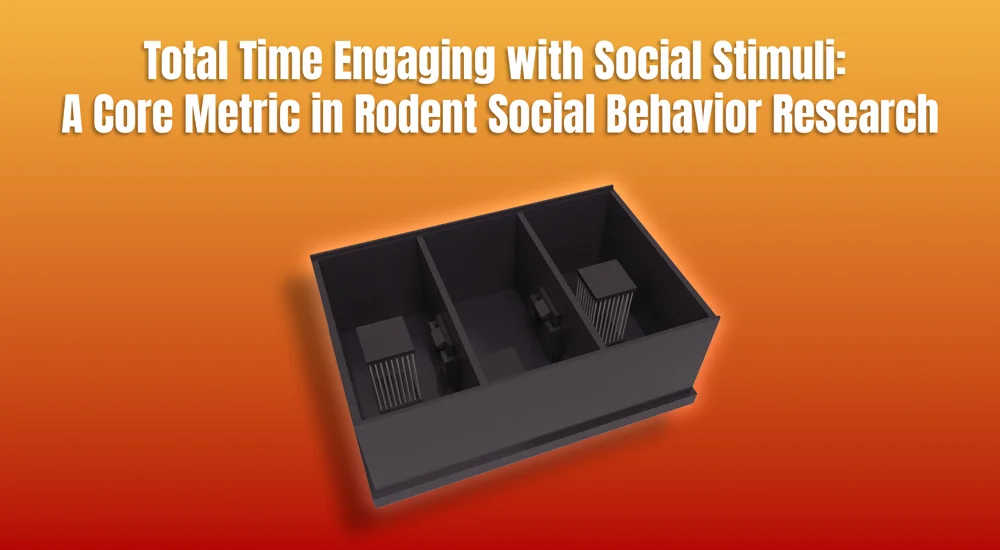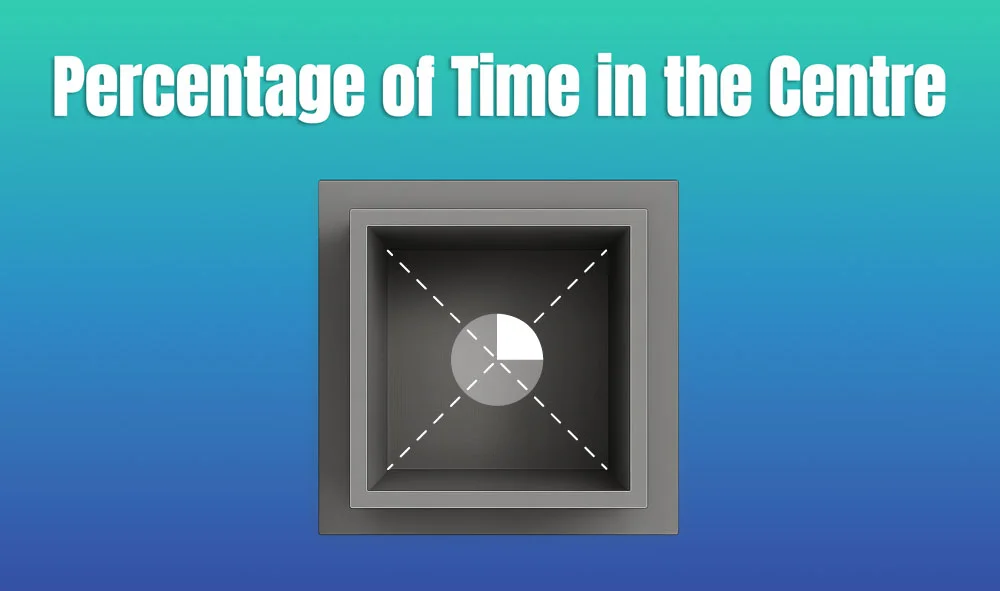

Soil biology is a branch of science that focuses on the organisms living in or interacting with the soil. These organisms can be microorganisms such as bacteria or fungi, or macroorganisms such as plants and animals.
Their activities instigate physical, chemical, and biological processes that take place above and below ground. In the long run, these organisms and their interactions shape the soil characteristics, which influence its ecosystem and the location where it is found.
As a science, soil biology involves the study of the ecological food web that takes place due to the interaction of these living organisms.
And since the ground serves as the interaction site for various organisms on earth, it also investigates the impact of their activities and their interactions on its properties and formation.
Soil originated from the disintegration of rocks in the pedosphere, the uppermost layer of Earth’s surface not occupied by water.
Natural rocks and those in man-made structures disintegrate when they are exposed to weathering agents such as water, wind, frost, temperature shifts, and other atmospheric gasses.
Despite having similar components, the ratio of each component in soils differs from one area to another. These differences arise from:
Hence, soil characteristics not only differ based on location but also when and how it is formed. And these components are broadly organized into four groups:[1]
Minerals are crystalline solids that aggregate to form a rock. Disintegrated rocks result in mineral particles of different sizes and species, which aggregate to form soil.
Minerals constitute about 45% of the overall components. They are often found as mineral salts, and most are acidic if dissolved. Common minerals found in soil include silicon dioxide, aluminum silicates, oxides of iron, and calcium carbonate.
Soil organic matter, or SOM, is decomposing dead plants and animals that can be transformed into humus, a dark, nutrient-rich, complex organic matter.[2]
Bacteria, fungi, and small animals such as mites, millipedes, earthworms, slugs, and shelled snails feed on dead plants and larger animals, breaking down complex molecules such as lignin, cellulose, lipids and proteins in the process.
Subsequently, these complex molecules are decomposed into simpler molecules, providing plants and other photosynthetic microbes with carbon and nutrients they can use to produce food for other animals.
Water fills the pore spaces between mineral and SOM particles or it’s absorbed onto the surface of these particles.
Air fills the open pore spaces that are not occupied by water. It is used by organisms that live underground for their respiration.
A soil’s uniqueness is reflected in its properties, which are recorded chronologically in layers, called horizons. These horizons are vertically combined to form a soil profile.
Each horizon differs in its thickness and can be characterized based on various physical and chemical properties of the ground.
Notable properties include:[2]
These properties are determined by the ratio and composition of the forming components, hence each characteristic is interwoven and influences one another. For example, soil color is dependent on mineral species, composition, amount of organic matter, and moisture.
Also, while minerals, ratio of minerals and organic matter, size of particles and pore space largely determine the soil structure and texture; these two latter properties affect the nutrient and water-holding ability, and the soil temperature, which ultimately affects its water content and biodiversity.[1,2]
Most large animals that come in contact with the soil are typically restricted to its surface. Plants, small animals, and microorganisms, however, interact with the soil surface and exert their influence beyond the uppermost horizons.
These organisms, which make up the soil biota or community, closely interact with the soil and play significant roles in developing soil profiles.[1]
For instance, plants penetrate their roots into the ground as they grow. Microorganisms and animals such as ants, earthworms, millipedes, slugs, and shelled snails inhabit and feed on plant products and litter on the L-layer.
Eventually, this L-layer becomes the O-horizon as the layer is being decomposed, while newer litter and organic matter are being formed on top of its surface.
The several living organisms found underground can be classified based on their sizes:[2]
Macro- and megafauna are organisms whose body widths are larger than 2 mm and they consume dead plants and organic litter. Examples include moles, earthworms, ants, millipedes, beetles, termites, and scorpions.
Mesofauna is a group of organisms whose body widths are between 0.1 mm to 2 mm. Microarthropods represent the most abundant and best-described mesofauna and act often as consumers. Examples are mites, springtails (Collembola), and pot worms.
Microfauna refers to organisms whose body widths are less than 0.1 mm. Microfauna include:[2]
Microorganisms in soil communities are microbes such as bacteria, yeast, fungi, and algae. They represent the most abundant and diverse group of organisms, a few notable microbes are:[1]
Common mycorrhizal fungi are:[2]
The biological activity of living organisms, especially microorganisms, provides the soil with nutrients and cycles them through the ecological food web of the site.
Food produced from plants grown aboveground is consumed by consumers that live in or below the ground. Wastes from food consumption, including plant, animal remains, and organic fertilizers, are decomposed, transforming them into nutrient forms that plants and other autotrophs can use to produce food.
The nutrients are cycled through the food web when consumers feed on the food and defecate or die, and decomposers digest the feces or consumers’ remains into the form of nutrients that plants and autotrophs can use.
Certain bacteria and fungi can enrich the soil with nutrients. Nitrogen fixers acquire nitrogen from the atmosphere, supplying it with ammonium while nitrifiers convert ammonium into nitrates.
Mycorrhiza can provide phosphorus in exchange for carbon sources derived from the plants they colonize. These minerals can be assimilated by plants and other autotrophs to produce food for consumers.
The ratio of soil-forming components determine its properties, including soil structure, texture, and moisture. To a certain degree, these properties are dictated by the biodiversity of the soil biota and their interactions with the soil.
The rate of organic matter decomposition and nutrient release relies on the species present on the location. In other words, the number of organisms and the species that decompose and transform organic matter into consumable nutrients affect the ratio of organic matter, water content, and air space between the components.
The composition of the soil dictates its structure and texture, which, in turn, prescribes the compatibility of the site for organisms to inhabit. Ultimately, the inhabiting organisms condition the soil fertility by acquiring or making nutrients available for autotrophs’ use, determining the suitability of its applications.[1]
Soil serves as a platform for the growth and development of microbes, plants, and animals that live above, in or below ground. Their interaction with the soil and with one another is depicted in a soil profile, consisting of several layers called horizons.
Overall, soil biology looks into the dynamics of the soil, in view of its occupying creatures and their impact on its properties and formation. Such understanding is useful in assessing its potential for use in agriculture and other human activities.
In behavioral neuroscience, the Open Field Test (OFT) remains one of the most widely used assays to evaluate rodent models of affect, cognition, and motivation. It provides a non-invasive framework for examining how animals respond to novelty, stress, and pharmacological or environmental manipulations. Among the test’s core metrics, the percentage of time spent in the center zone offers a uniquely normalized and sensitive measure of an animal’s emotional reactivity and willingness to engage with a potentially risky environment.
This metric is calculated as the proportion of time spent in the central area of the arena—typically the inner 25%—relative to the entire session duration. By normalizing this value, researchers gain a behaviorally informative variable that is resilient to fluctuations in session length or overall movement levels. This makes it especially valuable in comparative analyses, longitudinal monitoring, and cross-model validation.
Unlike raw center duration, which can be affected by trial design inconsistencies, the percentage-based measure enables clearer comparisons across animals, treatments, and conditions. It plays a key role in identifying trait anxiety, avoidance behavior, risk-taking tendencies, and environmental adaptation, making it indispensable in both basic and translational research contexts.
Whereas simple center duration provides absolute time, the percentage-based metric introduces greater interpretability and reproducibility, especially when comparing different animal models, treatment conditions, or experimental setups. It is particularly effective for quantifying avoidance behaviors, risk assessment strategies, and trait anxiety profiles in both acute and longitudinal designs.
This metric reflects the relative amount of time an animal chooses to spend in the open, exposed portion of the arena—typically defined as the inner 25% of a square or circular enclosure. Because rodents innately prefer the periphery (thigmotaxis), time in the center is inversely associated with anxiety-like behavior. As such, this percentage is considered a sensitive, normalized index of:
Critically, because this metric is normalized by session duration, it accommodates variability in activity levels or testing conditions. This makes it especially suitable for comparing across individuals, treatment groups, or timepoints in longitudinal studies.
A high percentage of center time indicates reduced anxiety, increased novelty-seeking, or pharmacological modulation (e.g., anxiolysis). Conversely, a low percentage suggests emotional inhibition, behavioral avoidance, or contextual hypervigilance. reduced anxiety, increased novelty-seeking, or pharmacological modulation (e.g., anxiolysis). Conversely, a low percentage suggests emotional inhibition, behavioral avoidance, or contextual hypervigilance.
The percentage of center time is one of the most direct, unconditioned readouts of anxiety-like behavior in rodents. It is frequently reduced in models of PTSD, chronic stress, or early-life adversity, where animals exhibit persistent avoidance of the center due to heightened emotional reactivity. This metric can also distinguish between acute anxiety responses and enduring trait anxiety, especially in longitudinal or developmental studies. Its normalized nature makes it ideal for comparing across cohorts with variable locomotor profiles, helping researchers detect true affective changes rather than activity-based confounds.
Rodents that spend more time in the center zone typically exhibit broader and more flexible exploration strategies. This behavior reflects not only reduced anxiety but also cognitive engagement and environmental curiosity. High center percentage is associated with robust spatial learning, attentional scanning, and memory encoding functions, supported by coordinated activation in the prefrontal cortex, hippocampus, and basal forebrain. In contrast, reduced center engagement may signal spatial rigidity, attentional narrowing, or cognitive withdrawal, particularly in models of neurodegeneration or aging.
The open field test remains one of the most widely accepted platforms for testing anxiolytic and psychotropic drugs. The percentage of center time reliably increases following administration of anxiolytic agents such as benzodiazepines, SSRIs, and GABA-A receptor agonists. This metric serves as a sensitive and reproducible endpoint in preclinical dose-finding studies, mechanistic pharmacology, and compound screening pipelines. It also aids in differentiating true anxiolytic effects from sedation or motor suppression by integrating with other behavioral parameters like distance traveled and entry count (Prut & Belzung, 2003).
Sex-based differences in emotional regulation often manifest in open field behavior, with female rodents generally exhibiting higher variability in center zone metrics due to hormonal cycling. For example, estrogen has been shown to facilitate exploratory behavior and increase center occupancy, while progesterone and stress-induced corticosterone often reduce it. Studies involving gonadectomy, hormone replacement, or sex-specific genetic knockouts use this metric to quantify the impact of endocrine factors on anxiety and exploratory behavior. As such, it remains a vital tool for dissecting sex-dependent neurobehavioral dynamics.
The percentage of center time is one of the most direct, unconditioned readouts of anxiety-like behavior in rodents. It is frequently reduced in models of PTSD, chronic stress, or early-life adversity. Because it is normalized, this metric is especially helpful for distinguishing between genuine avoidance and low general activity.
Environmental Control: Uniformity in environmental conditions is essential. Lighting should be evenly diffused to avoid shadow bias, and noise should be minimized to prevent stress-induced variability. The arena must be cleaned between trials using odor-neutral solutions to eliminate scent trails or pheromone cues that may affect zone preference. Any variation in these conditions can introduce systematic bias in center zone behavior. Use consistent definitions of the center zone (commonly 25% of total area) to allow valid comparisons. Software-based segmentation enhances spatial precision.
Evaluating how center time evolves across the duration of a session—divided into early, middle, and late thirds—provides insight into behavioral transitions and adaptive responses. Animals may begin by avoiding the center, only to gradually increase center time as they habituate to the environment. Conversely, persistently low center time across the session can signal prolonged anxiety, fear generalization, or a trait-like avoidance phenotype.
To validate the significance of center time percentage, it should be examined alongside results from other anxiety-related tests such as the Elevated Plus Maze, Light-Dark Box, or Novelty Suppressed Feeding. Concordance across paradigms supports the reliability of center time as a trait marker, while discordance may indicate task-specific reactivity or behavioral dissociation.
When paired with high-resolution scoring of behavioral events such as rearing, grooming, defecation, or immobility, center time offers a richer view of the animal’s internal state. For example, an animal that spends substantial time in the center while grooming may be coping with mild stress, while another that remains immobile in the periphery may be experiencing more severe anxiety. Microstructure analysis aids in decoding the complexity behind spatial behavior.
Animals naturally vary in their exploratory style. By analyzing percentage of center time across subjects, researchers can identify behavioral subgroups—such as consistently bold individuals who frequently explore the center versus cautious animals that remain along the periphery. These classifications can be used to examine predictors of drug response, resilience to stress, or vulnerability to neuropsychiatric disorders.
In studies with large cohorts or multiple behavioral variables, machine learning techniques such as hierarchical clustering or principal component analysis can incorporate center time percentage to discover novel phenotypic groupings. These data-driven approaches help uncover latent dimensions of behavior that may not be visible through univariate analyses alone.
Total locomotion helps contextualize center time. Low percentage values in animals with minimal movement may reflect sedation or fatigue, while similar values in high-mobility subjects suggest deliberate avoidance. This metric helps distinguish emotional versus motor causes of low center engagement.
This measure indicates how often the animal initiates exploration of the center zone. When combined with percentage of time, it differentiates between frequent but brief visits (indicative of anxiety or impulsivity) versus fewer but sustained center engagements (suggesting comfort and behavioral confidence).
The delay before the first center entry reflects initial threat appraisal. Longer latencies may be associated with heightened fear or low motivation, while shorter latencies are typically linked to exploratory drive or low anxiety.
Time spent hugging the walls offers a spatial counterbalance to center metrics. High thigmotaxis and low center time jointly support an interpretation of strong avoidance behavior. This inverse relationship helps triangulate affective and motivational states.
By expressing center zone activity as a proportion of total trial time, researchers gain a metric that is resistant to session variability and more readily comparable across time, treatment, and model conditions. This normalized measure enhances reproducibility and statistical power, particularly in multi-cohort or cross-laboratory designs.
For experimental designs aimed at assessing anxiety, exploratory strategy, or affective state, the percentage of time spent in the center offers one of the most robust and interpretable measures available in the Open Field Test.
Written by researchers, for researchers — powered by Conduct Science.








Monday – Friday
9 AM – 5 PM EST
DISCLAIMER: ConductScience and affiliate products are NOT designed for human consumption, testing, or clinical utilization. They are designed for pre-clinical utilization only. Customers purchasing apparatus for the purposes of scientific research or veterinary care affirm adherence to applicable regulatory bodies for the country in which their research or care is conducted.